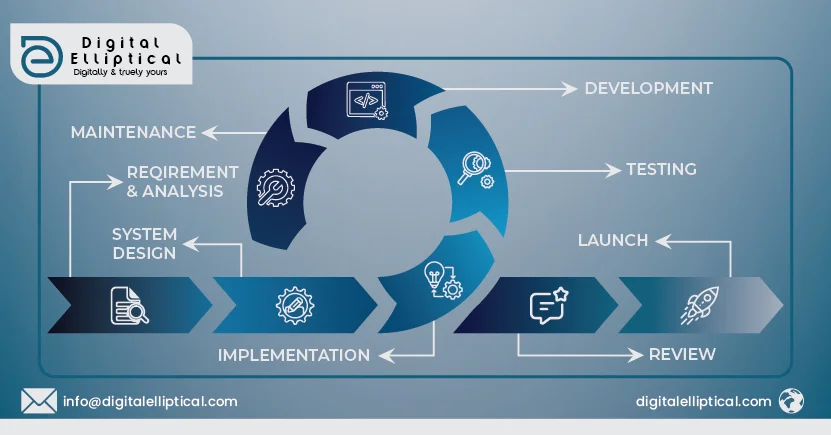6 Reasons Why Agile Results in Better Software
Making a successful software product isn't an easy thing. A well-grounded vision, skilled group, or even large financial support might not save a project. The truth is that over 60% of projects using technology utterly fail. Why exactly do projects fail? Each day contributes. Rarely does one major thing kill a project. Oftentimes, teams are aware of but never seem to prevent female condition slow decline which may last several months or even years known as a death march. How many of these are true for you?
Is your project over budget?
Are you behind schedule?
Are you
having trouble figuring out when you’ll be done?
Are you
producing more bugs than features?
Is morale low?
Is turnover
high?
Are user expectations not being met?
If any of the above questions was answered in the affirmative, your project may be on a death march. But the industry has developed techniques for handling such issues. These techniques are called Agile.
Essentially, agile philosophy is about the way software should be constructed. Agile is not a procedure; but a framework that has generated several real software development processes e.g. Scrums within, Extreme Programming, and the feature driven development.Furthermore, software building has been reinvented by agile movement hence making it important for all developers who wishes to be successful on their projects, they have gone through what these principles are all about.
If you need further convincing, here are six reasons why Agile leads to better software:
Agile projects are feedback-driven:Agile product development involves constantly incorporating external feedback. This largely depends on an important Agile concept called the iteration. The team does not write all the software code at a go but divides it into small sections that are then worked on one item at a time for 2-4 weeks before another iteration starts. The cycle ends after each iteration. the system is demonstrated to stakeholders. This gives them a chance to see the progress being made, give suggestions on the direction, and allows the team to correct any misunderstandings or incorporate any important changes that have come up. The concept of the iteration may be Agile greatest contribution to the world of software development. If you do nothing else, your team should seriously consider developing in an iterative manner. The benefits are significant.
Agile projects improve communication and collaboration:Whether or not you adhere to agile methodologies, one truth remains constant; human beings are more communicative while conversing than when writing down words, verbosely. It may sound contradictory however, even though generating comprehensive requirement documents usually wastes time, people end up perplexed by them. Such kind of confusion arises simply because documents do not have any means through which users can ask questions or clarify issues with developers directly. management, and developers that is needed to truly define something as complex as software. Instead of trying to enumerate and convey every single use case, edge condition, and error state in a written document, it’s far more efficient and effective to sit down in a room with your team and hash these out together. Often times this process will identify unconsidered scenarios, eliminate unimportant concepts, and put the team on the same page about exactly how the software works.
Agile projects are transparent.In Agile, emphasis is put on giving special focus to visibility into the work being done. Teams are motivated to share progress information with stakeholders by, for example, providing them with automated build server logs. Demos and other meetings are always open to users and those managing various projects: as it prompts the release of the latest version for stakeholders, developers can be found giving out new builds for testing at regular intervals. Because of such initiative taken by developers, the team always knows well what is happening with their project. With this application, there is no longer any need for management to hand over project duties to developers and wait for them to bring back the desired results in six months. On a daily basis, one can see the happenings within the concerned project and make necessary arrangements.
Agile projects produce working software.The main purpose of each iteration is to generate functioning software. The main objective is to concentrate on user-facing features that add real value which keeps the team targeted towards its overall goal – shipping a product. Iterations keep on adding capabilities over time and thus make it easier for stakeholders to know how the product is evolving. This slow change from one form to the other enhances the team’s ability to easily detect problems and immediately make adjustments, thus improving its sense of contentment and building an optimistic trend which propelled other projects.
Agile produces realistic schedules.Since Agile methods break work into small iterations, your team will begin to develop predictability. After a while it will start to become apparent how much work can be accomplished in one iteration, and this can be used to make predictions about the overall schedule of the project. In the Scrum world for example, the average number of story points that your team finishes in a sprint can be used to extrapolate how much time is needed to finish all the work left in the product backlog.
Agile projects save time and money.
Continuous feedback and incremental implementation help to solve potential problems early and rapidly, therefore there is much less risk of losing months of work and starting all over again. Software development in start-ups is often a tough task. That is why your project should be able to withstand change as opposed to failing due to it.
I have been remended that in the succeding blog post I will elaborate on how Scrum, the most popular Agile method does this. At Digital Elliptical, we use Scrum in a number of projects and we have gone a long way with it.



